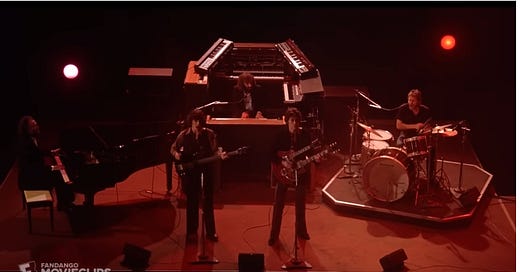The Last Waltz: Thanksgiving Day, 1976
Revised, with Notes on the Passing of Robbie Robertson, 1943-2023
The passing of Robbie Robertson at age 80 yesterday was sad, of course. The first two friends I text messaged with were unsentimental. One, an avid reader of rock biographies (I am not), declared himself “more on the Levon Helm side of that fracas.” I thought this an impolite first reaction to anyone’s death, but I value this friend’s candor and directness. The other, with whom I had a quiet Zoom conversation an hour later, had first-hand knowledge of the desperation of one of The Band’s members post-Last Waltz heroin hunger. He acknowledged the gray area of any group’s potential for conflict over songwriting credit and money, the monkey on the back of The Band, and the reason for the taking of sides between Levon and the others, and Robertson.
Robbie took most of the songwriting credit and music publishing ownership (that’s where the money is), while Helm, Rick Danko, Richard Manuel, and Garth Hudson appeared to have felt that the songs were written collaboratively, Robbie’s lyrics a…
Keep reading with a 7-day free trial
Subscribe to Critical Conditions by Wayne Robins to keep reading this post and get 7 days of free access to the full post archives.



